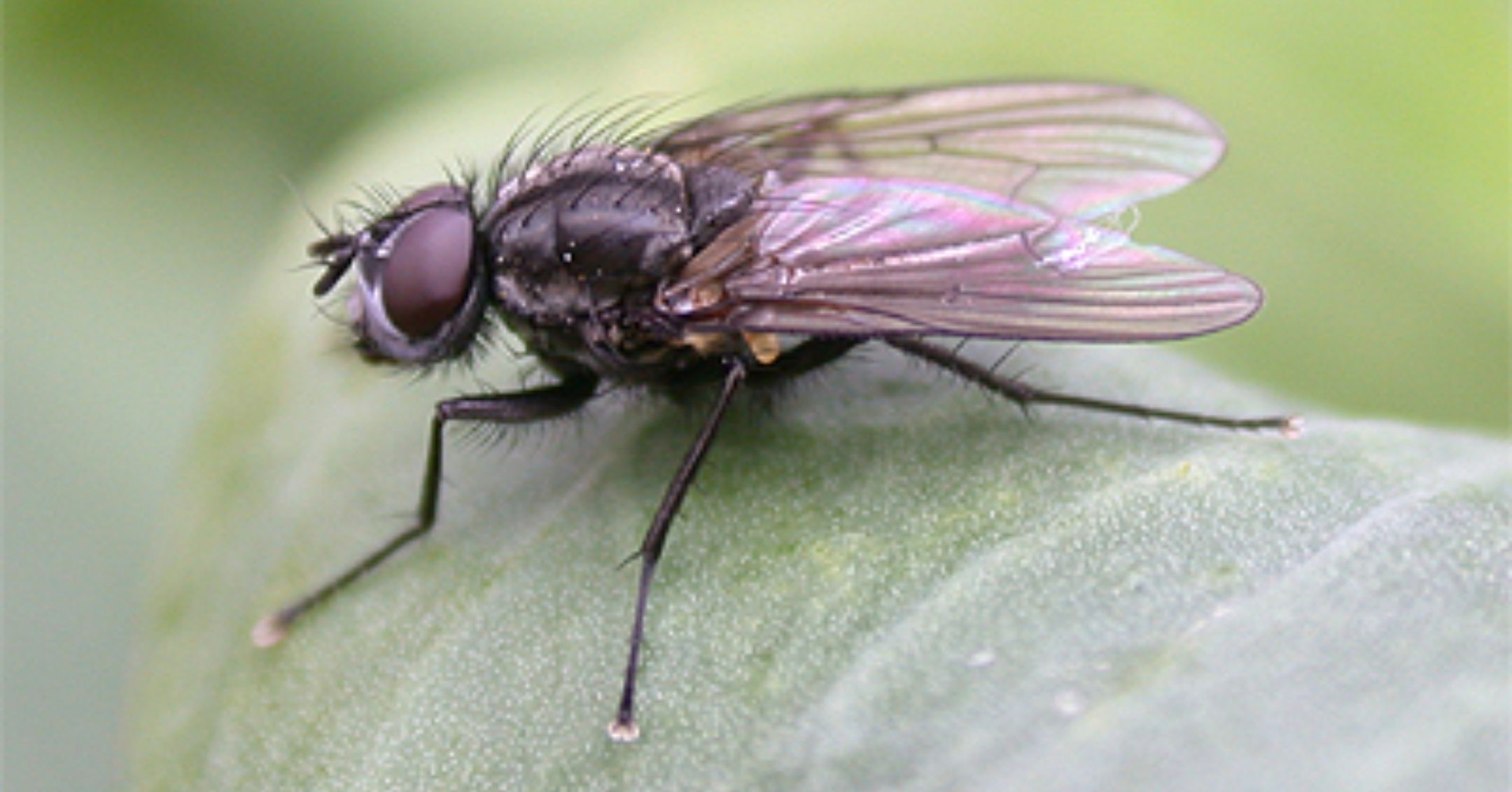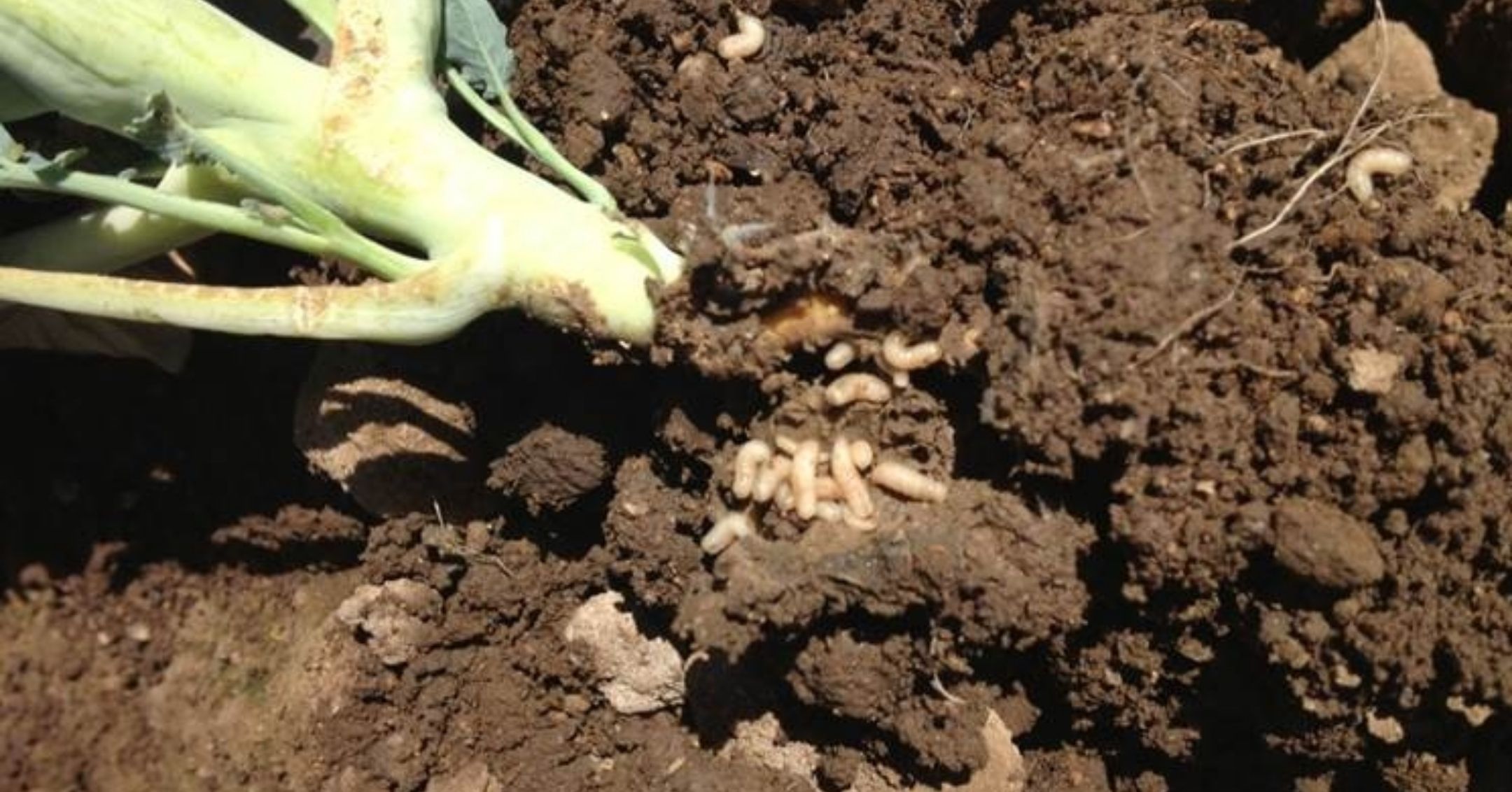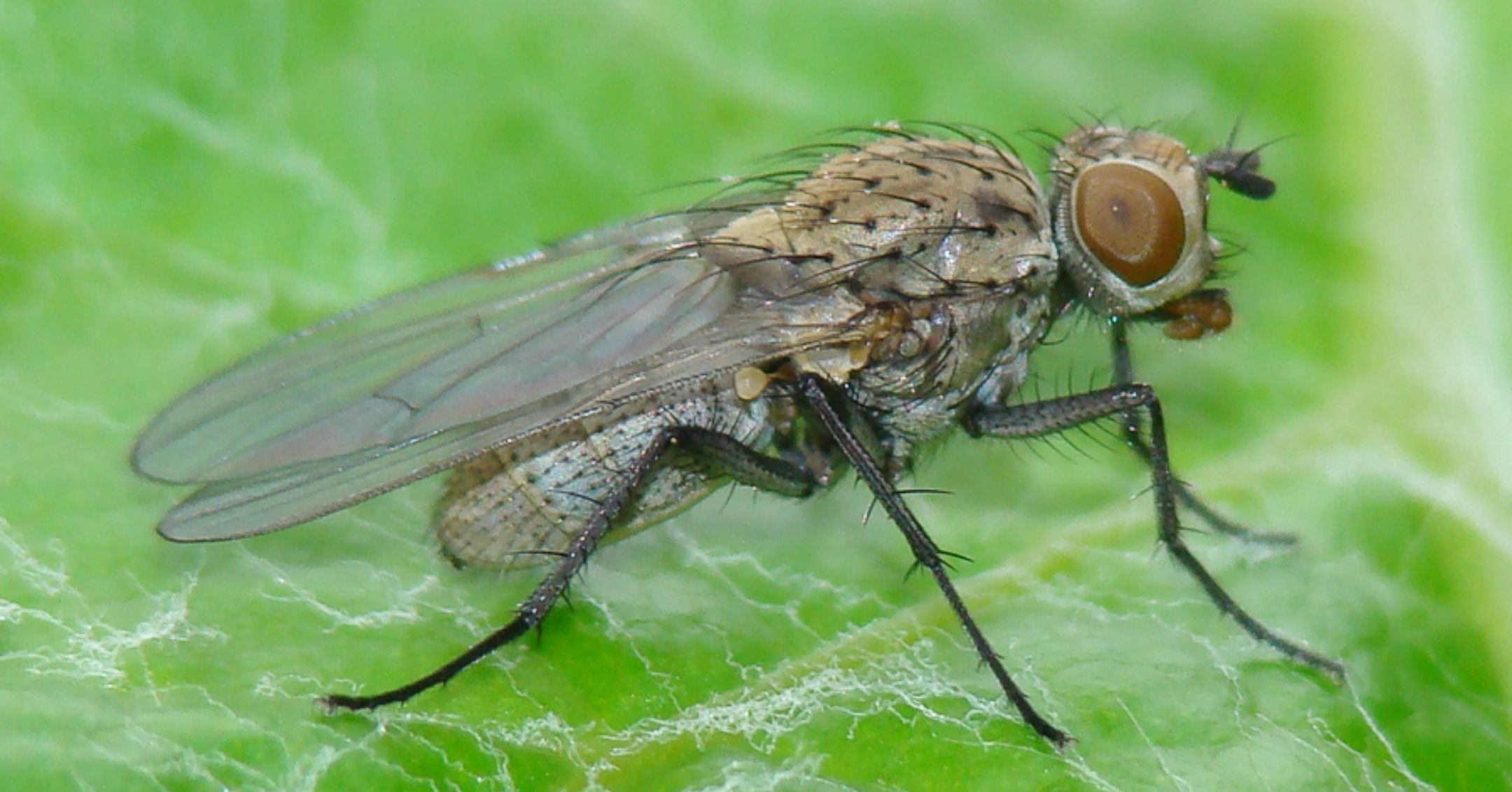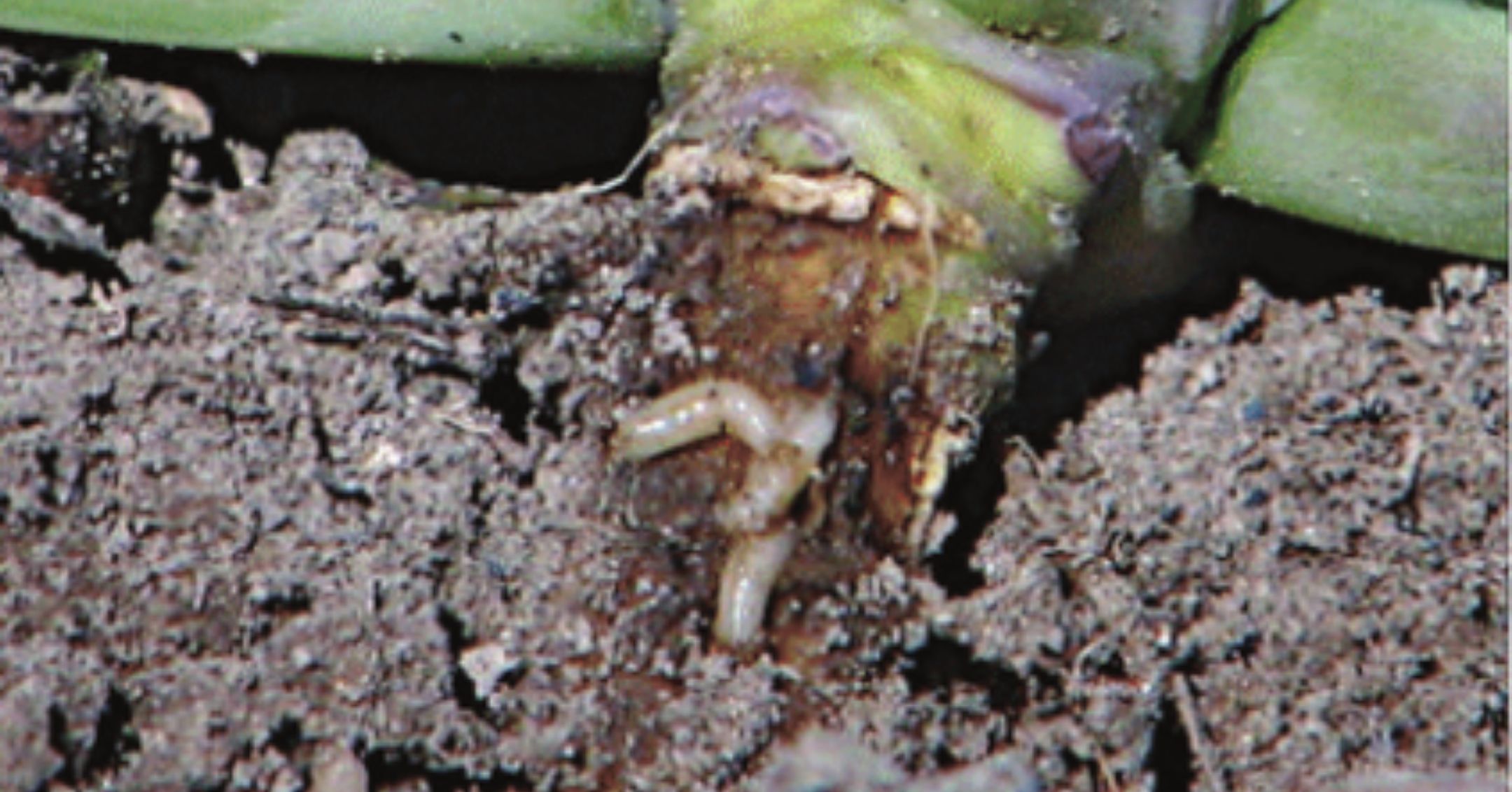Root Maggots




Cabbage Maggot
Description
Adult: Dark gray fly about half the size of the common house fly.
Egg: Small white, oval-shaped; typically laid on the soil near the stem of the host plant.
Larva: Small, white, legless maggot with a blunt tailend and pointed head.
Pupa: About ¼-inch long and brown in color.
Life History
Cabbage maggot pupae overwinter in crop debris and soil. Adults emerge in early May, and mated females lay eggs in the soil at the base of host plants. Small maggots hatch in 4-10 days and immediately burrow into the stem of the host plant. After about 3 weeks, mature larvae leave the stems and pupate in the soil close to the soil surface. About 2 weeks later, adult flies emerge and lay eggs for another generation. Larvae from this generation feed on roots or stems and develop into the overwintering pupae.
Damage
Cabbage maggot larvae feed on the roots of cole crops, and can tunnel through tap roots. Tunnels provide an entry for decay, fungi, and bacteria. Damaged plants show wilting, reduced growth, and lighter green plant parts. Cabbage maggot prefers cauliflower, Brussels sprouts, radish, cabbage, broccoli, collards, kohlrabi, and turnip. Cress, beet, and celery can also be infected. Cauliflower and Brussels sprouts can be more susceptible than hybrid cultivars of broccoli. Seedlings and young plants are most vulnerable while healthy plants can tolerate moderate infestations.
Monitoring
After susceptible crops emerge, watch for wilting, reduced growth, and signs of chlorosis (yellowing). If cabbage maggots are suspected, pull up affected plants and check the roots and soil to confirm maggot presence. If tunnels are found in roots, but no maggots are present, then maggots have already exited roots to pupate in the soil. This timing is too late for an insecticide treatment to be effective.
Management
Cultural
- Rotate crops. Plant susceptible hosts as far away as possible from where they were planted the previous year.
- Use a set of drag chains when direct-seeding susceptible crops. Drag chains can help eliminate moisture where seeds have just been planted. Adult flies may be more attracted to moist areas for egg-laying.
- Be aware of cabbage maggots in cool, wet spring weather. These conditions are more favorable for cabbage maggot development.
- Plant seeds into raised soil beds to promote soil drying and warming, and discourage egg-laying by cabbage maggots.
- Immediately after harvest, destroy or disc under crop residues. Maggots are able to survive for an extended time in crop residues.
- When several rows of seedlings are infested, remove them and replant.
Biological
Carabid beetles, rove beetles, and parasitic wasps may help suppress cabbage maggots. However, biological controls alone generally do not keep cabbage maggot populations below economically damaging levels, especially once a population has established.
Chemical
Fumigate or treat infested soil before planting. In areas where cabbage maggot causes economic injury, treat with a band of insecticide at the base of the plant at the time of planting or transplanting.
Seedcorn Maggot
Description
Adult: Seedcorn maggot adults are about 0.2 inches (5 mm) long with gray to brown bodies and are similar in appearance to the onion maggot.
Egg: White elongated; deposited in soils rich in organic and decaying matter and on seeds and seedlings.
Larva: Maggots are legless, tapered, about 0.25 inches (6 mm) long, and yellowish-white in color. Head-ends are wedge shaped with small black mouth hooks in front.
Pupa: Ova-shaped, dark brown, about the size of a grain of wheat, and found in the soil.
Damage
Maggots prefer feeding in soils rich in organic and decaying matter (such as manure). They burrow into the seeds and roots of many vegetable crops, destroy the seed germ, and may cause rot in plant tissue. Damaged seeds are unable to provide adequate food resources to support initial plant growth. Seeds and plants attacked by seedcorn maggots may not emerge causing reduced stands. Seedcorn maggots cause damage by feeding on roots and tunneling into taproots of susceptible plants. The lower leaves of infested plants often become chlorotic (yellow) and severe damage results in halted plant growth.
Seedcorn maggots are polyphagous (feed on several vegetable host plants), and prefer soybeans and corn. Other susceptible plants include brassicas, beans, peas, cucumber, melon, onion, potato, and others.
Management
Cultural
- Use the cultural control methods listed above in the cabbage maggot management section.
- Direct seed when conditions are ideal for rapid seed germination. Longer germination time results in higher infestation risks.
- Early season infestations can be avoided by planting susceptible hosts later in the season.
Biological
Birds, ants, and spiders have been observed attacking adults, and fungal diseases can infect larvae. However, these natural enemies are not considered a significant form of control.
Chemical
Apply a preventive seed treatment for optimal control.

